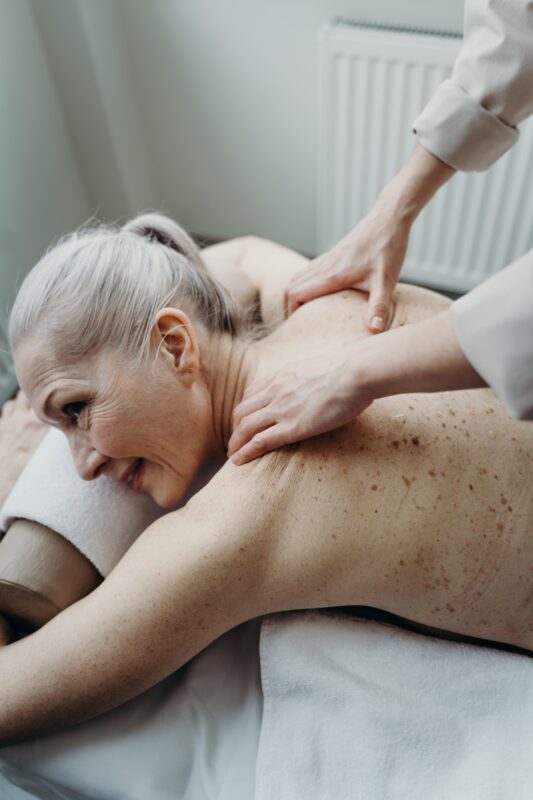Hand massages are an enjoyable instant activity for senior residents at all levels. They are an easy, inexpensive and great way to help residents feel loved and calm. They can even help ease some behavior associated with dementia. Physical touching is very important to wellbeing and is a fundamental human need. Many persons with dementia struggle to express themselves verbally.
Most forms of communication are non-verbal. Finding ways to communicate with persons in your care is a vital part of improving their quality of life. As caregivers, therapeutic touching is one of the most important and underutilized tools available at all times. The following are some tips that help make the most of a soothing, therapeutic hand massage activity.
Some benefits of this activity have a sustained effect on residents. One study showed that hand massage and calming music reduced agitation for one hour after the massage.2 There is increasing evidence that certain essential oils, such as lavender, may help balance emotions and improve mood. Aromatherapy has been shown to be a therapeutic non-drug approach for easing symptoms and helping improve cognition in patients with Alzheimer’s disease.1

Before starting a hand massage:
- Have a room or area designated for your hand massage activity. Play calming and soothing music to help create a relaxing environment.
- Create a “hand and nail care” caddy
Get a large container or caddy to keep all your supplies together.
Your caddy should include:
Lavender essential oil (blended in a carrier oil)
The hand massage
- Ask your resident to sit in a comfortable position where they are able to rest their arm and relax. You may want to have them rest their hand on a rolled towel for extra support. Because elderly people have fragile skin be very gentle.
- Offer your resident water, juice, tea or decaf coffee.
- Warm the lotion in your hands and add one drop of the lavender oil blend to the lotion. Use lavender oil that is pre-mixed in carrier oil, like jojoba oil. This makes it gentler on the skin. These blends are available at most stores that sell essential oils.
- Start by using your thumbs to push gently on the palms in upward strokes.
- Massage gently around the wrist bones, knuckles and fingertips.
- Use your thumbs in a circular motion on the inside of the palm.
- Hand massages should last from 3 to 10 minutes depending on the resident’s preferences, number of participants and amount of time you have for this activity.
- Make sure you know your resident’s preferences and specific needs. Some people have allergies or don’t like certain fragrances. Some simply do not like to be touched. Invite these folks to sit and chat with you anyway!

Nail care and manicures
- Tending to the person’s nails after a hand massage is a great time to preserve dignity and assist with hygiene.
- Some residents may also enjoy having their nails painted. It is an easy way to make female residents feel glamorous.
- Gather a few residents at a table to have a manicure pampering session.
- Have at least three choices of quick dry nail polish colors, including a natural or clear tone.
- Use a manicure stick to clean under and around the fingernails. Gently file the nails and clip, if needed.
- Make sure to check with the nursing department before clipping a resident’s nails, especially if the person is diabetic.
Hand massages are a rapid and simple activity that brings many lasting benefits. It can be an activity that is done daily, with a group, or one-on-one. It provides an opportunity to bond and communicate with residents with a therapeutic touch. They enjoy being pampered… and they deserve it!
References
- https://www.ncbi.nlm.nih.gov/pubmed/20377818
Jimbo D1, Kimura Y, Taniguchi M, Inoue M, Urakami K.
- Remington, Ruth, “Calming music and hand massage with agitated elderly” (1999). Doctoral Dissertations Available from Proquest. AAI9920645.
http://scholarworks.umass.edu/dissertations/AAI9920645
